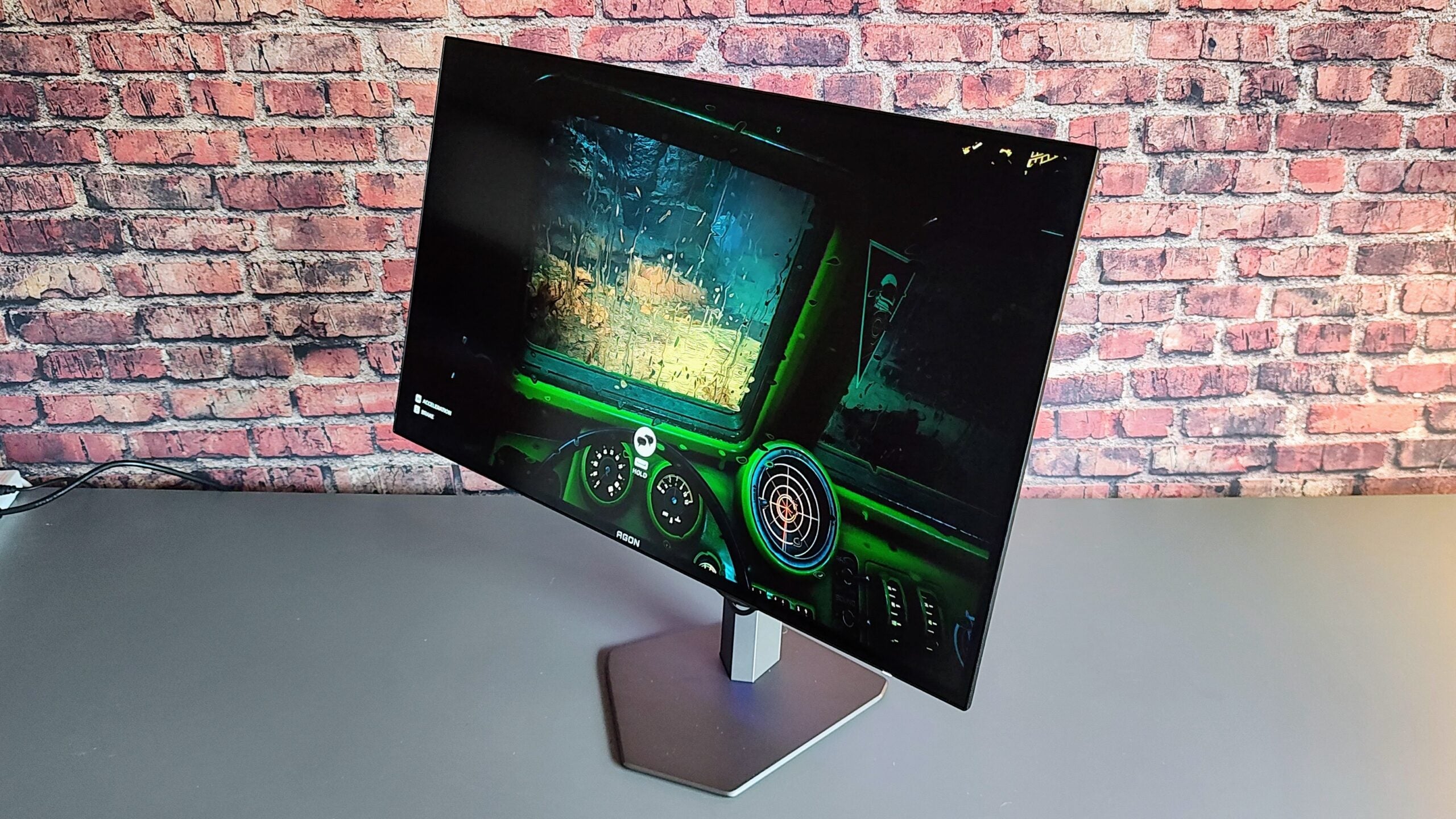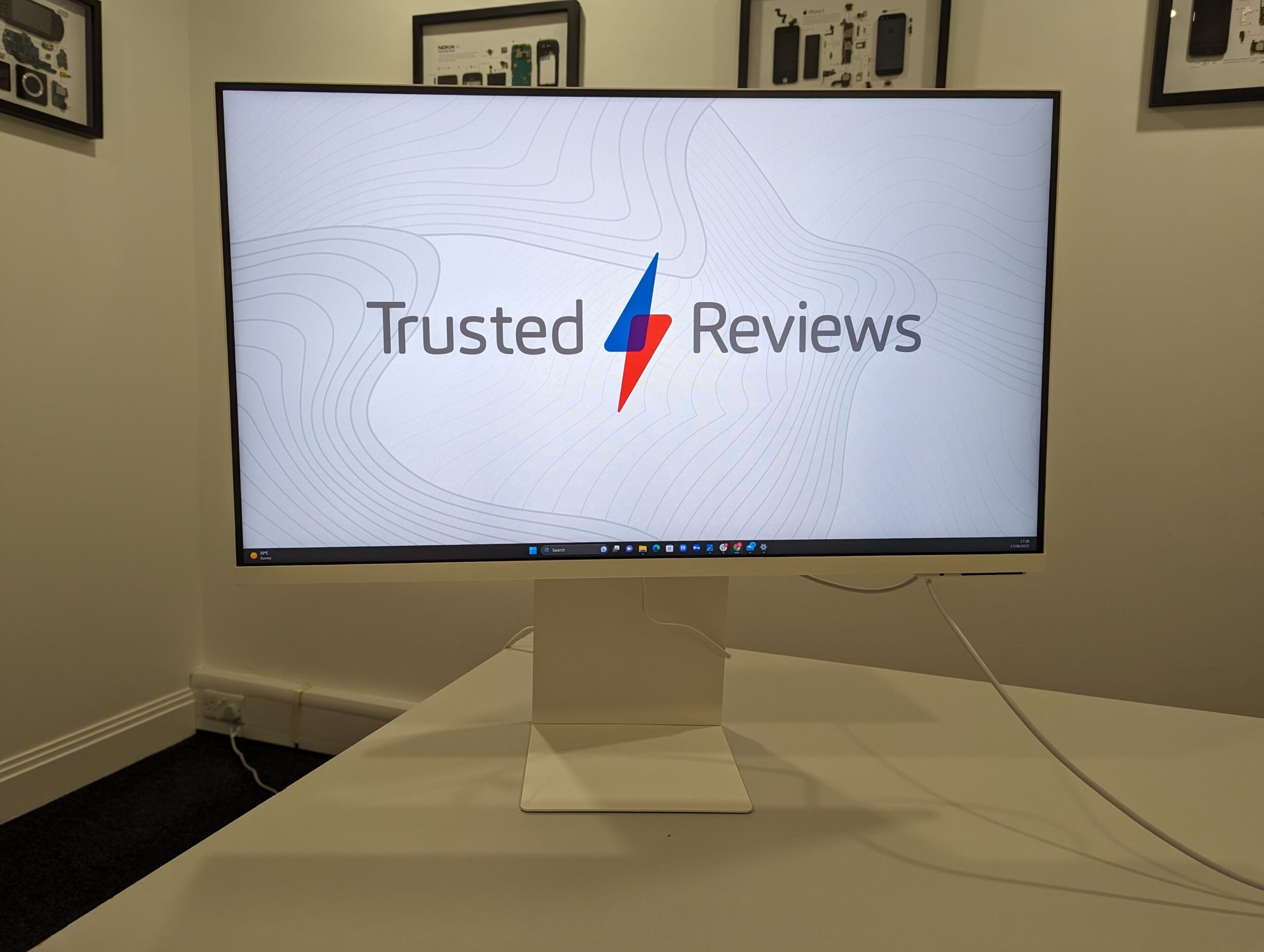Lenovo Legion Y34wz-30 Review
A solid but unexceptional Mini LED gaming monitor

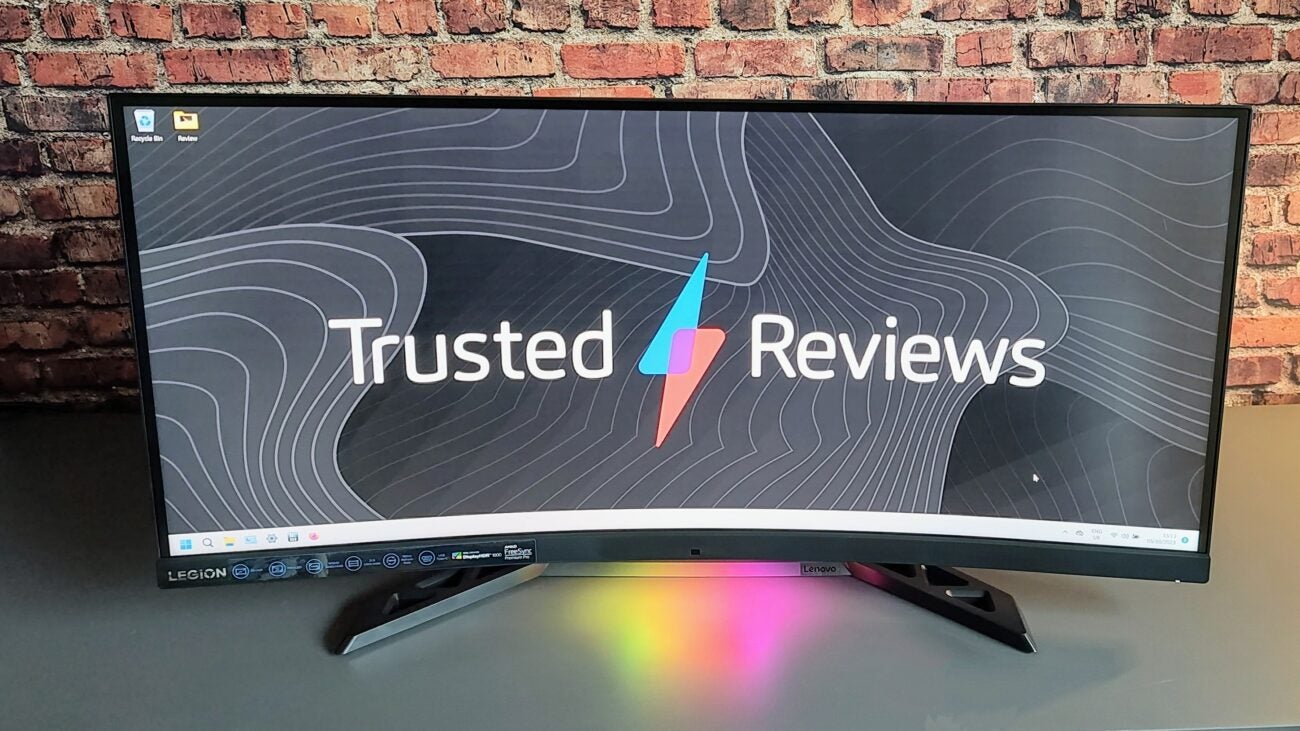
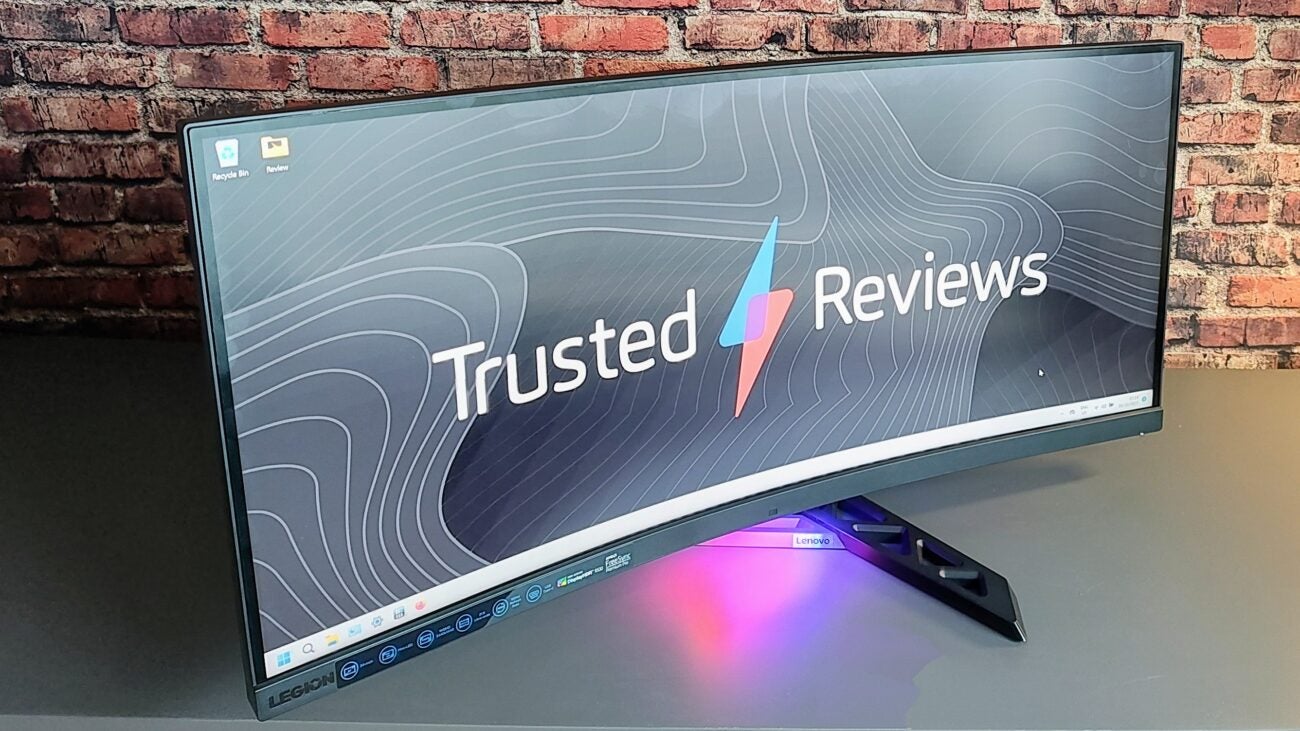
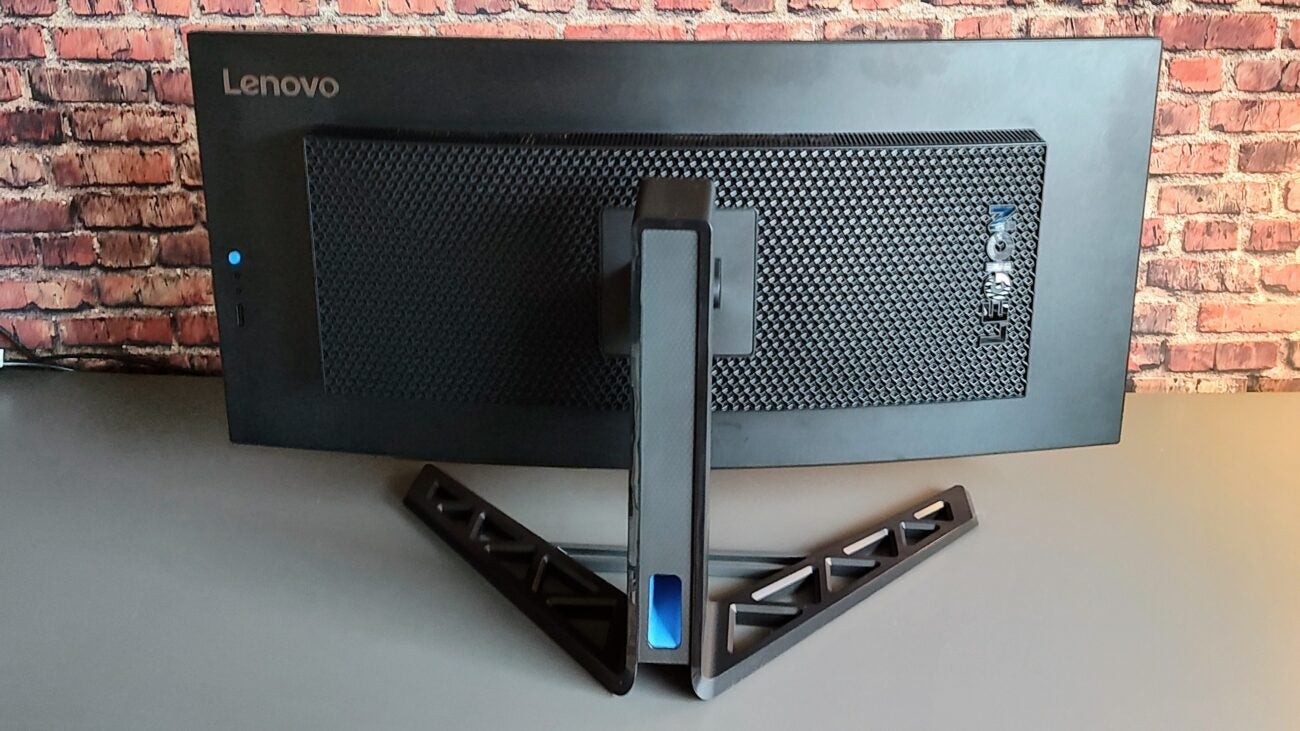

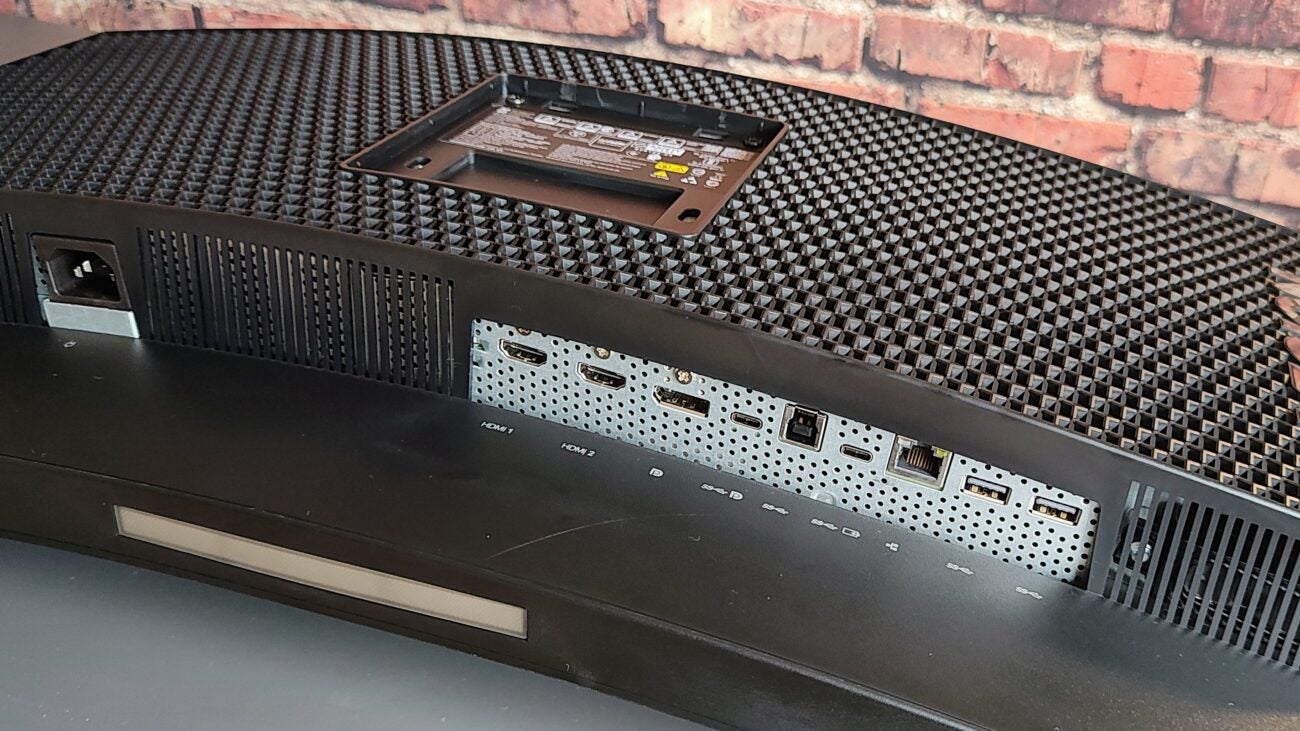

Verdict
The Lenovo Legion Y34wz-30 is a gaming monitor that struggles to distinguish itself. With OLED gaming monitors costing only a little more and the Mini LED competition using IPS rather than VA panels and more local area dimming zones, it is a tough recommendation for most. But, a broad selection of ports and strong HDR performance may appeal to some.
Pros
- Comprehensive range of I/O ports
- Good HDR performance
- Simple controls and OSD menu
Cons
- Motion fidelity is nothing special
- Fewer local dimming zones than the competition
- 180Hz only in temporary overdrive mode
- Temperamental USB Hub
Key Features
- Mini LED backlightThe Mini LED backlight generates eyeball-melting levels of brightness
- High resolution curved display3440 x 1440 resolution with a 1800R curvature
- Comprehensive connectivityKVM USB hub feature has a wide range of I/O ports letting you easily switch between sources
Introduction
OLED monitors simply can’t generate the same levels of whole-screen brightness as the competition. A whole-screen brightness level of 300nits is good for an OLED panel, whereas an LED panel can often manage 500nits and a Mini LED screen twice that. So, Lenovo is having a go at the latter with its new Legion Y34wz-30 gaming monitor.
There are two key features of a good Mini LED monitor. First is the number of Mini LED zones. The highest I’ve ever seen is on a Philips office monitor with 2,048 dimming zones, but 1,024 or 512 are more common. The second is the quality of the LED panel itself.
Lenovo’s new Legion Y34wz-30 gaming monitor isn’t shooting for the stars in either of these categories and the price tag of £899 is close to that of some OLED gaming monitors. This gaming monitor has a mountain to climb. Here’s my review.
Design
- 34 inches and a 1500R curve is a near-ideal combination
- Plenty of I/O ports and 2.5G Ethernet
- Simple OSD menu layout and navigation
The first thing you notice about the Legion Y34wz-30 is the stand. It’s a chunky affair that looks more like a section of the Brooklyn Bridge than a monitor base.
The stand measures 350mm from front to back, and with 50mm wide feet with a brace between them, it takes up a lot of desk space. More than I think a stand for a 34-inch monitor should. It’s not a particularly adjustable affair either, offering just 30° of swivel to left or right, tilt between -5 degrees and +22 degrees and 135mm of height adjustment.
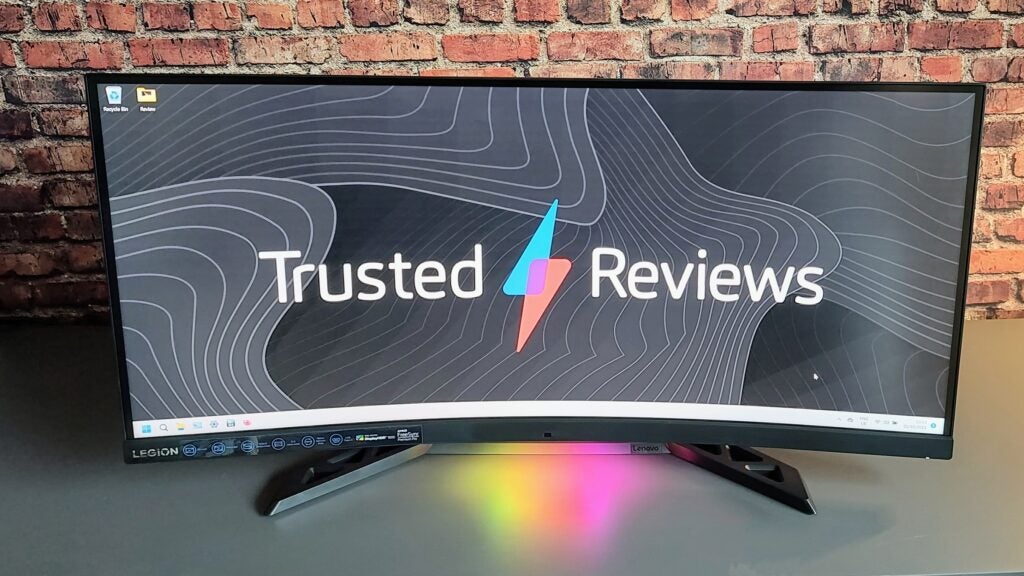
The cabinet is a solidly built black plastic affair with the display surrounded by 9mm wide bezels at the top and sides and a 27mm chin below. The panel housing is 25mm deep, while the central hardware hump in the middle adds another 40mm making the Y34wz-30 quite chunky. Thanks to the bulky stand, the assembled unit is 320mm deep and weighs 10.5kg.
Underneath the cabinet is an RGB LED light which can be set to run various fixed patterns or in a smart mode that reacts to display colour or sound output or mouse movement though I found everything to be quite random no matter which smart mode I selected.
There’s a wide selection of I/O ports with 2 HDMI 2.1, DisplayPort 1.4 and USB-C DP Alt Mode for video input and 6 USB data ports; 4 USB-A downstream and a single Type-B and a second Type-C for upstream data.
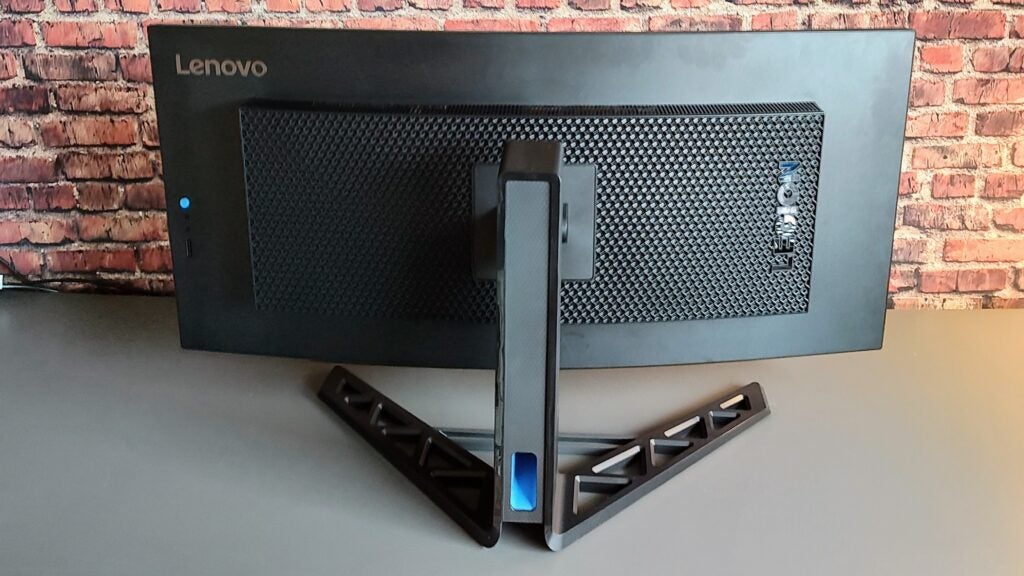
All the USB ports are 3.2 Gen 1 (or 5Gpbs) spec apart from the DP Alt Mode Type-C, which also supports 10Gpbs data and 140W PD charging. There’s also a 2.5G RJ45 LAN port and an audio jack. That’s an excellent selection.
Some thought has been give to the arrangement of the ports. Most are on the back of the cabinet facing down, but two USB-A ports and the 3.5mm audio jack are in a cutout on the left side, which is much easier to access.
Changing the display settings is done via a joystick and four buttons on the back of the cabinet on the right side, the larger bottom button being a simple On/Off button, the two above having dedicated input management roles, while the multi-purpose joystick at the top does everything else.
Lenovo has done little to make the Y34wz-30 stand out in environmental terms and makes no claims regarding the amount of recycled material used. It also has a G rating in the EU Energy Efficiency Class, which is the lowest there is. At least the packaging is overwhelmingly cardboard, with only a few thin strips of styrofoam used to support the front edges of the cabinet.
Image Quality
- Super-bright in HDR mode
- Motion handling is nothing special
- 180Hz only in temporary overclock mode
The new Legion Legion Y32wz-30 monitor features a 34-inch 3,440 x 1,440 VA panel with a 1500R curvature and a Mini LED backlight. Acer uses the same technology in its 4K IPS Predator XP32 gaming monitor. There is, however, one big difference between the Acer and Lenovo implementations: The Acer has 576 local dimming zones, while the Lenovo has just 384.
Another point to make about the Legion Y32wz-30 is that the Mini LED backlight only works in HDR mode. With Windows in SDR mode, you are basically using a standard VA display.
The Legion Y34-wz-30 certainly doesn’t lack brightness hitting 480nits in SDR and a massive 1,220nits from a 10% screen area in HDR mode, well above the 1,000nits necessary for the HDR 1000 certification it carries.
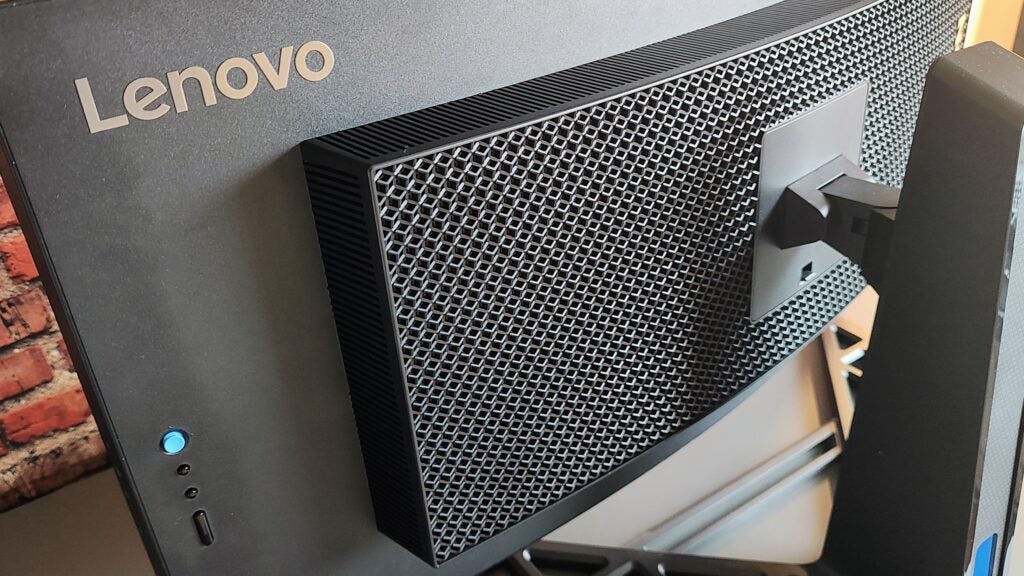
Full-screen HDR brightness settled at a rather lower level of 802nits, but the difference had little impact on visual performance, and that 802nits number is way beyond even the most fevered imaginings of the average OLED display. Panel uniformity was excellent, with very little brightness or Delta E deviation across the screen.
The lowest black luminescence I recorded while in SDR mode was 0.14 nits, giving a contrast ratio of 3,395:1. In HDR mode, that dropped 0.08 nits, and the contrast ratio jumped to a towering 15,500:1.
The difference is most easily detected if you open a full black image on the screen in SDR mode. It looks rather grey, as it would on a conventional LED display but switch to HDR, and it looks completely black, as it would on an OLED panel.
Good HDR performance is the Y34wz-30’s main reason for existence, and HDR performance is indeed impressive, with great contrast and excellent colour saturation. Watching an HDR recording of a fireworks display, the searingly bright explosions really jumped out.
The relatively low number of local dimming zones does result in some haloing noticeable when small bright objects are moving across a dark screen, said objects having a glow around them because they are smaller than the dimming zone behind them.
The effect is hard to notice in everyday use. Playing Returnal in HDR, was a slight issue due to the dark environment, but in the brighter landscapes of Halo Infinite, it was not. I prefer an OLED monitor for Returnal, but Halo perfectly suits a brighter Mini LED panel.
The screen has plenty of colour to show, with good gamut coverage of 99.1% sRGB, 80.1% Adobe RGB and 87.3% DCI-P3. Colour accuracy was perfectly acceptable, too, with the display showing a Delta E variation of 2.16 vs. the sRGB profile.
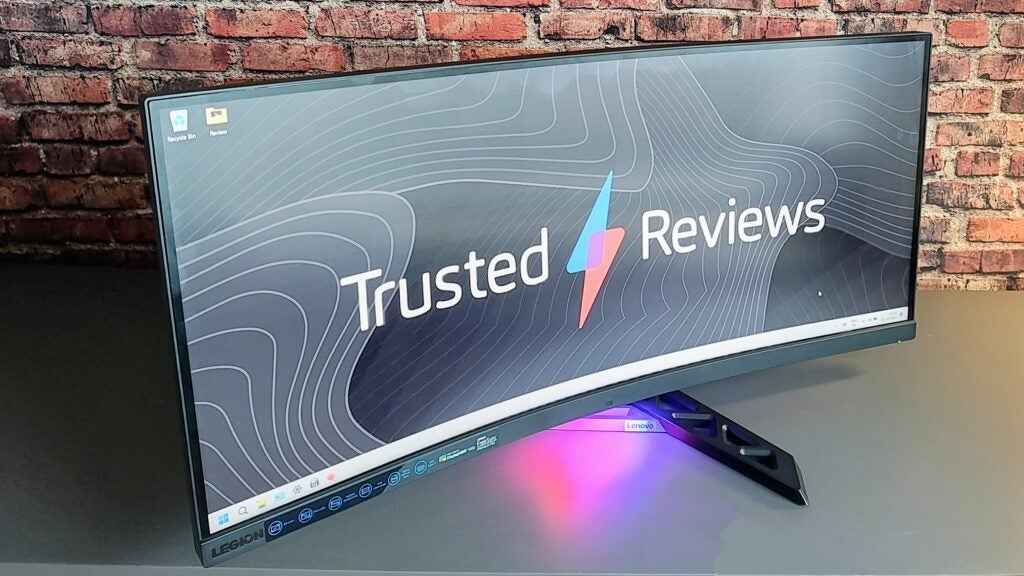
Lenovo bills the Y34wz-30 as a 180Hz refresh rate monitor, but it’s actually a 165Hz panel with a 15Hz overclock. However, engaging the overclock only lasts 30 minutes before it reverts to the lower refresh rate. Usefully the monitor supports the maximum refresh rate over both DisplayPort and HDMI.
The overclock is actually of questionable value because I could not detect any improvement in the motion handling between 165Hz and 180Hz or when changing the overdrive setting. Switching on the MPRT (Moving Picture Response Time) reduced the display brightness without noticeably improving the ghosting.
No matter the combination of settings I used, there was more ghosting in evidence in the Blurbusters UFO test than the Acer Predator X32FP demonstrated despite the Acer having a technically slower 160Hz panel. Of course, dark artefact trails are a known weakness of VA panels, making it all the more curious that Lenovo has gone down the VA rather than the IPS path.
The Y34wz-30 is certified with AMD’s FreeSync Premium Pro but also works with Nvidia’s G-Sync system, so screen tearing isn’t an issue no matter which brand of GPU you use.
Software and Features
- Speakers are loud but raucous
- Excellent OSD menu design
- Useful formatting and gaming extras
Buried inside the cabinet are two 5W speakers. They can throw out some serious volume, 81.5dB(A) measured against a pink noise source at a 1m distance, but they lack bass and can become a little raucous at high volumes. The sound quality is on par with the Acer Predator X32, but both fall short of the quality you get from Philips’s new Evnia-series gaming monitors.
The Y34wz-30 is fitted with what, on paper, should be one of the best USB hubs and KVM implementations on the market. Not only are there plenty of connectivity options with USB-B and USB-C upstream inputs and five USB downstream, but the menu system to assign which data inputs should work with which video inputs is simplicity itself. And there is a dedicated button on the rear of the cabinet to swap between KVM inputs.
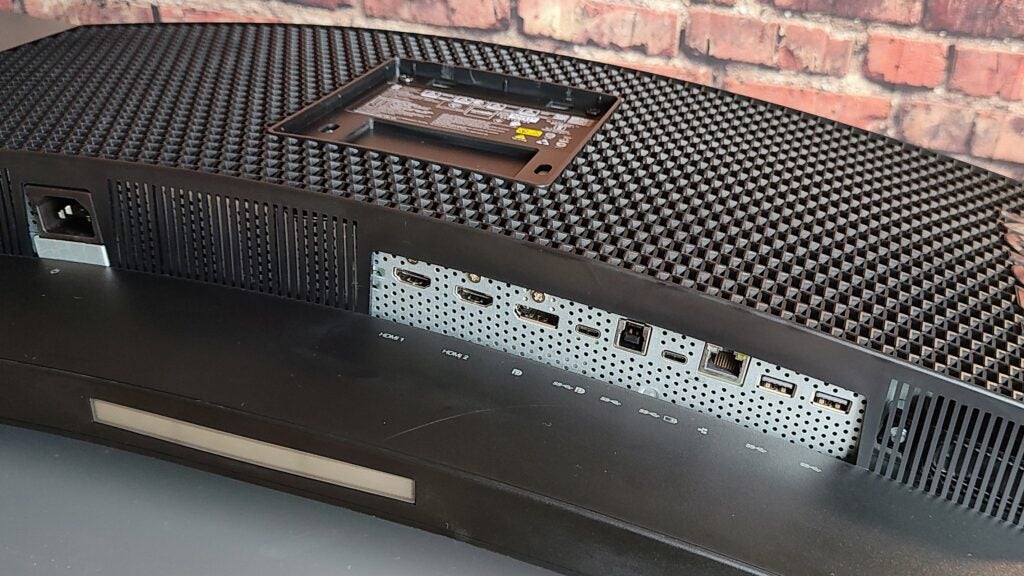
But the USB hub wouldn’t work with my SteelSeries Aerox 3 gaming mouse. I’ve never experienced this issue before despite using the same all-SteelSeries keyboard and mouse combination with numerous gaming monitors. I flagged up my issues with Lenovo, who could not replicate them, leaving me to conclude that it must be an issue particular to the monitor sample I was sent to test.
The OSD menu system is very well organised, with everything positioned exactly where you would expect it to be. If you don’t like using the joystick to navigate the menu system, Lenovo’s Display Control Centre software lets you do it via the Windows desktop.
The Port Settings menu hosts a wide array of picture-in-picture and picture-by-picture options and a TrueSplit mode that fixes a Windows partition (1:1 or 2:1) in place.
Gaming enhancements include a virtual gunsight with two styles: a timer, frame rate counter and basic hardware stats for your GPU and CPU. A 4-level black boost reveals enemies lurking in the darkness.
Latest deals
Should you buy it?
Strong HDR performance and plenty of ports
HDR performance is the star of the show for Lenovo’s latest gaming monitor, and that’s backed up by a useful selection of ports.
You want more local dimming zones and a very high-refresh rate
The competition is strong and the Lenovo falls short against rival OLED, Mini LED and gaming-focused options.
Final Thoughts
Nothing is truly wrong with any part of the Y34wz-30’s performance but, HDR performance aside, it’s not that much better than some IPS or VA gaming monitors costing half the price, and its motion handling can’t touch several OLED monitors that are only a little more expensive.
Translating that into the real world, the award-winning Agon AG405UXC is an excellent 40-inch IPS gaming monitor with a refresh rate of 144Hz and a price tag of £529, while the 27-inch LG UltraGear 27GR95QE-B is a superb 240Hz OLED gaming monitor that can be picked for £850.
If you are prepared to pay a little more, then £1,150 will get you the Philips Evnia 34-inch 34M2C8600 (the little brother to the Evnia 42M2N900). For that extra £250, you get a monitor that blows the Legion into the weeks on every front other than maximum full-screen brightness. If you need the superb-bright Mini LED backlight, Acer’s 4K X32FP can now be picked up for £950.
How we test
We use every monitor we test for at least a week. During that time, we’ll check it for ease of use and put it through its paces by using it for both everyday tasks and more specialist, colour-sensitive work.
We also check its colours and image quality with a colorimeter to test its coverage and the display’s quality.
We used it as our main monitor for at least a week.
We used a colorimeter to get benchmark results.
We used our own expert judgement for image quality.
FAQs
The Legion Y34wz-30 has 384 Mini LED zones compared to 576 in the Acer Predator X32.
Legion Y34wz-30 uses a VA panel. It’s the only VA Mini LED display we have come across.

